
For those of us who prefer traveling in a kind of nomadic luxury, where access to a great spa, options for great food and wine, and exceptional off ship tours or exploring in a nomadic way, a high-end ocean cruise – one without thousands of people -- is the perfect answer. Recently, I traveled on the Viking Star, considered a small ship, as it accommodates only 930 passengers and 465 staterooms, each with its own balcony. It was the Empires Of The Mediterranean cruise, where we experienced the cuisine, history, and culture of Venice, the Dalmatian Coast and Greece.
To many on this cruise, relaxing by one of the pools with a great bottle of wine shared with friends, or eating alfresco watching coastlines and azure Mediterranean waters, was understandably all that mattered. Yet to others, what mattered was the exceptional off-ship guided tour experiences. Yes, the spa was available, with its warm Thalasso salt therapy pool, cold plunge, hot tub, sauna, and the one-of-a-kind Snow Grotto – the room full of 30-degree snow and ice – as well as spa treatments and therapies. But the off-ship experiences also had a major, often magnetic appeal.
There was mountain biking in Corfu, a 4x4 vehicle adventure in Montenegro, a private yacht cruise through an archipelago in Croatia, a private evening gondola cruise in Venice, truffle hunting in Sloveina, and many more. But I felt a real need, not a want, to experience two tours that seemed more like historic pilgrimages than day-long travels, and both were among Greek ruins, those that I never, ever expected to see. I taught a university-level Greco-Roman Cultural Traditions course years ago, and now I could experience Olympia, home for the first Olympic games, and then Delphi, sacred home of the Oracle of Apollo.
Seeing Olympia, where the first Olympic games were held in 776 BC, was exceptional. The games included foot races, wrestling, discus, javelin, long-jump, horse and chariot racing, and a type of boxing called Pancratium.
Walking among the ruins, sensing the games’ competitive grist and muscle, I observed the strength and largesse of ancient pillars, and the huge expanse of open field where games were played. The remains of the Temple and Alter of Zeus, and the Gymnasium were there as well. And walking through the arched entry that led to the Stadium, I knew the strongest men, horses, kings, emperors strode through also. I was part of a living history, walking on paths of the past in real time.
Also, on this site is one of the most important museums of Greece, The Archeological Museum of Olympia, that housed sculptures and pediments that I have seen only in coffee table art books.
The museum houses statuary from the two pediments of the Temple of Zeus, create in the first half of the fifth century, BC. It also houses the famous Nike of Paionios, cut from a single piece of Parian marble in 421 BC. Also, uncovered in the excavations at Olympia was the statue of Zeus And Ganymede – I had seen this terracotta statue in many art books, but seeing it close was unforgettable. It is believed this work of art was near or inside the Temple of Zeus, excavated not far away. The sculpture was based on a popular myth of Zeus stealing Ganymede, a young boy, and taking him to Olympus: a memorable subject – a homoerotic kidnapping -- for an immobile sculpture.
The next day, was the full day at Delphi. The Viking Star docked at Piraeus, Greece, where, a small bus took us through the city of Athens, then up mountain roads to Mount Parnassus and Delphi – about three hours from away. Delphi, about 2000 feet above sea level and in the mountains, is on the southern slope of Mt. Parnassus.
I had always wanted to experience Delphi, as it is the site of the 4th-century B.C. Temple of Apollo, home to the legendary Oracle. It was the place where the Oracle prophesied battle outcomes and answered difficult questions. Her purpose, it was said, was to share a glimpse of the future. It is said she predicted the Trojan War, and knew Socrates.
But the ruins at Delphi also house the remains of the sanctuaries of Apollo and Athena Pronaia, as well as an ancient stadium and theater.
Delphi was also considered, in the 6th century BC, to be the navel, or center of the world, and this belief was represented by the stone monument called Omphalos of Delphi. It is egg-shaped, and stands outside, amid the ruins. Most accounts originally locate the Delphi Omphalos as part of the sacred part of the Temple of Apollo.
Very like at the ruins of Olympia, at Delphi there is an exceptional museum of material excavated at or near the ruins. One of the most famous is the Charioteer of Delphi, discovered in 1896 near the Temple of Apollo. The Charioteer is one of the few surviving bronze pieces, created by casting several pieces of bronze, utilizing the lost wax method. Studying this exceptional work of art, and as close as I was to the statue, I noted the eyelashes of the Charioteer, the glass eyes, and a left foot with more stressed veins than the other, showing his uneven stance as he controlled the Chariot.
The other famous statue is the Sphinx of Naxos. The Sphinx sat on a tall Ionic column below the Apollo Temple terrace at Delphi. It was an imposing statue that served as a guardian within the sanctuary and, indirectly, as a reminder of the power and influence of the island of Naxos at that time, around 560 BC. It was carved from a large piece of white marble from the island of Naxos.
Seeing these remains of these exceptional statues, pediments, and all else from excavations nearby, the word “ruin” does not seem to apply. They are rather images, artifacts, voices of the past.
And they do not let us forget; just as words of great poets outlive them, so too do the stones of these structures remind us of ancient events, contests, belief systems, and prophecies. I was honored to see these living remains, and to walk among them.

Considered a small ship ocean cruise vessel, it holds 930 passengers, 435 staterooms, each with a balcony.
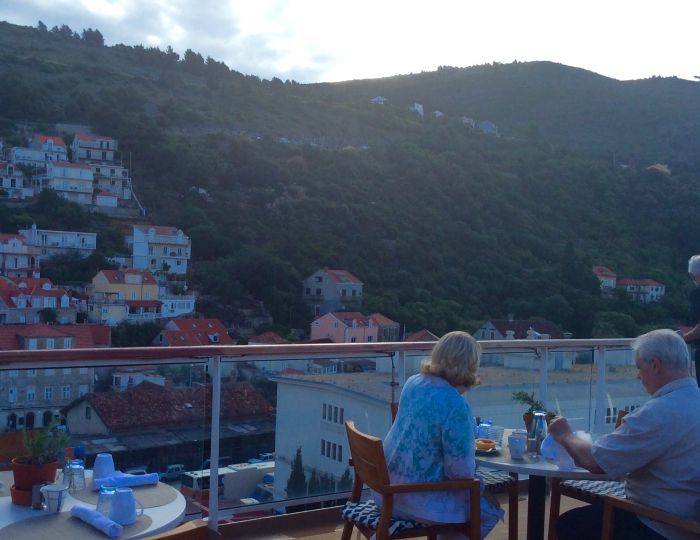
Sailing into Dubrovnik, a couple eats breakfast on one of the ship's outdoor terraces.
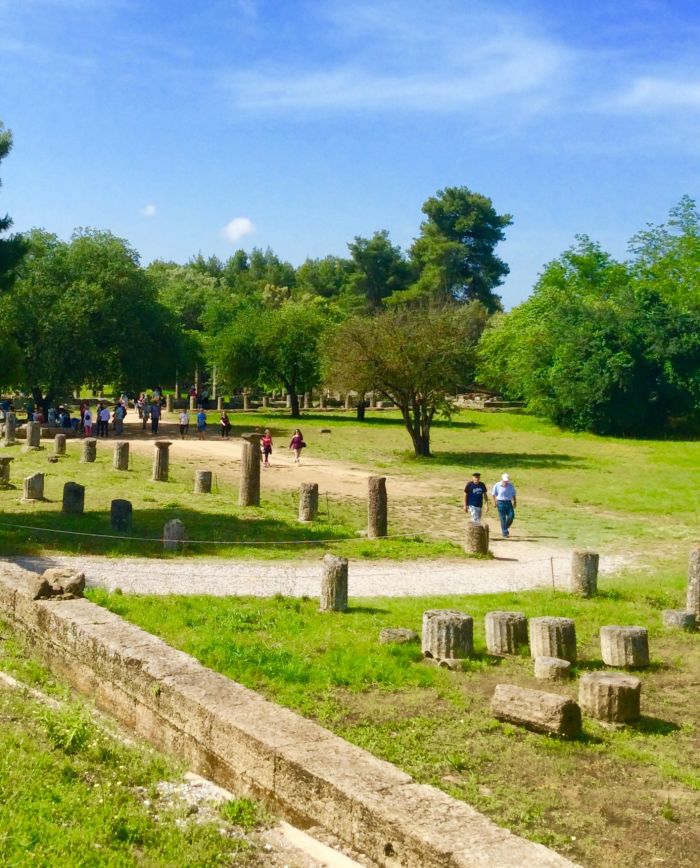
Walking among the Gymnasium Ruins, where athletes worked out and trained, in Olympia Greece.
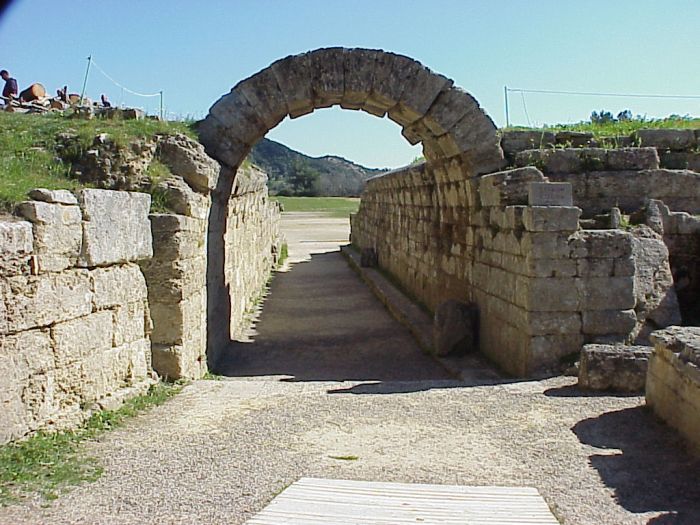
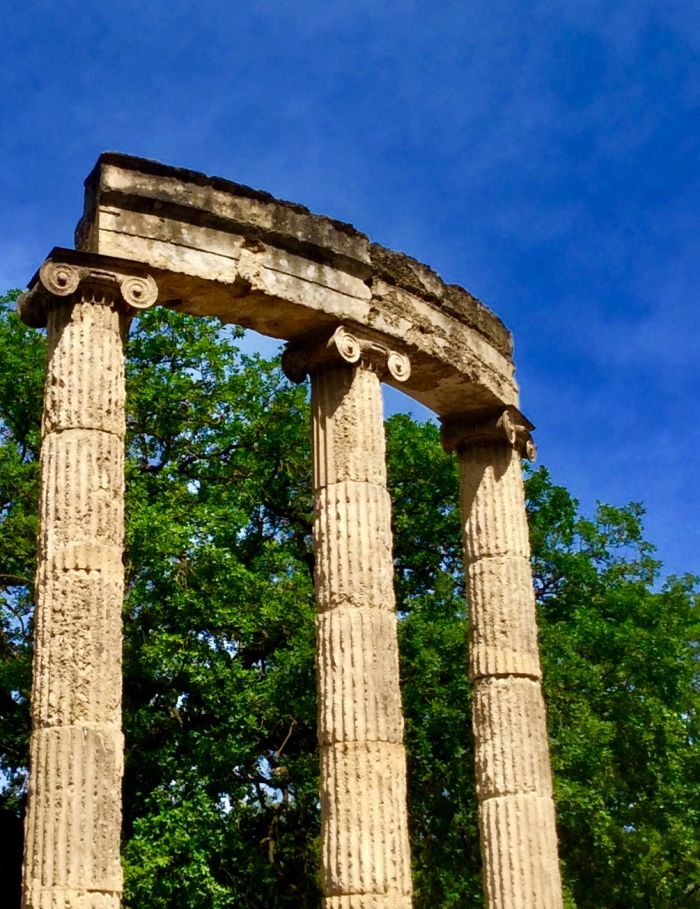
The Philippeion was erected by Philip II, King of Macedonia after the victory of Chaeroneia in 338 BCE. Originally, there were 18 Ionic columns and inside were gold and ivory statues of Philip's family, that included his son, Alexander the Great/

The Nike of Paionios is an ancient statue of the Greek goddess of victory, Nike, made by sculptor Paionios in 425–420 BC. The statue was excavated at Olympia in 1875–76 and originally stood near the temple of Zeus. Shown in the Archeological Museum of Olympia, Greece.
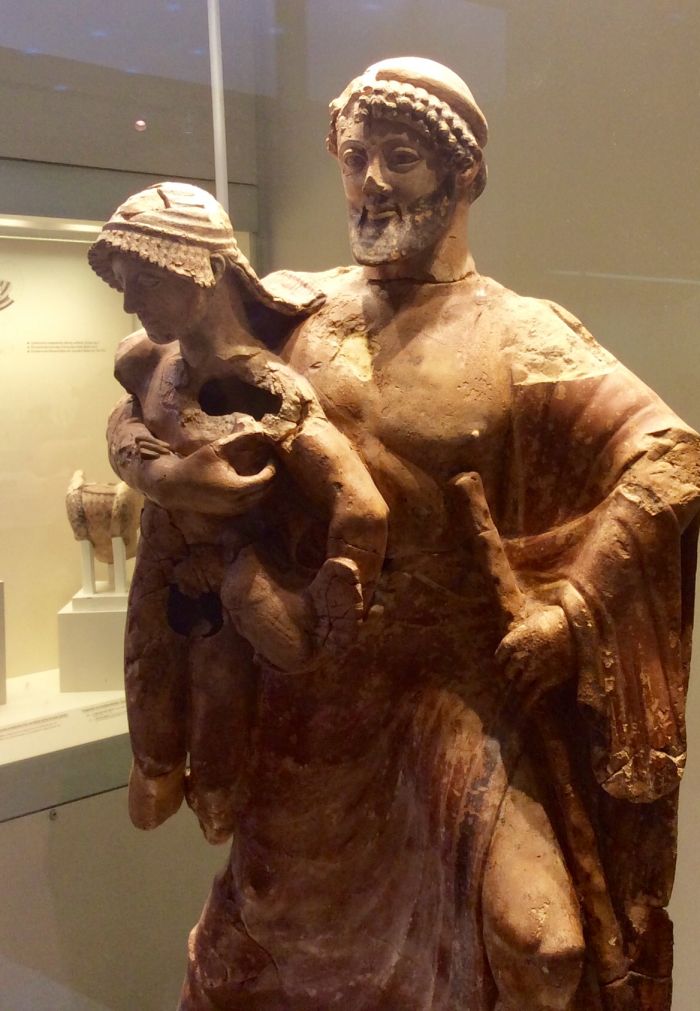
This terracotta sculpture is dated to around 480-470 BC and is attributed to an unknown Corinthian sculptor.
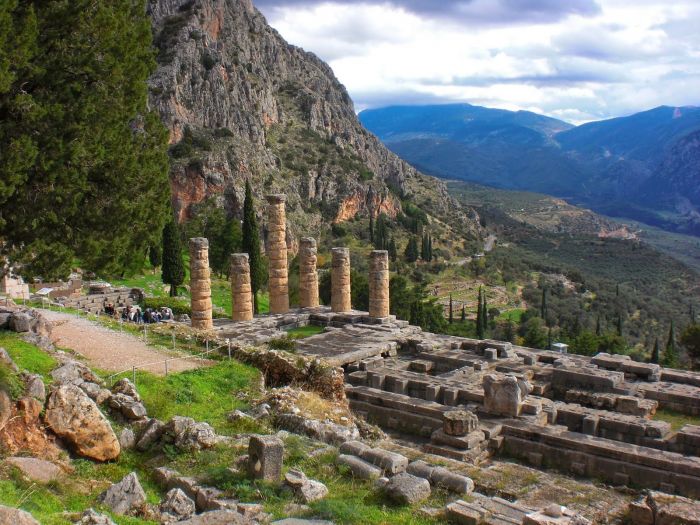
The Temple of Apollo is where the Oracle gave her predictions. The buildings, with Doric columns, dates back to the 4th century. B.C.

The tholos is a circular building which was created between 380 and 360 BC at the center of the sanctuary of Athena Pronaia. The sanctuary of Athena Pronaia is the first that would meet the ancient visitor. This fact gave also the name to the temple as pronaia means that her temple is first, built before the temple of Apollo.
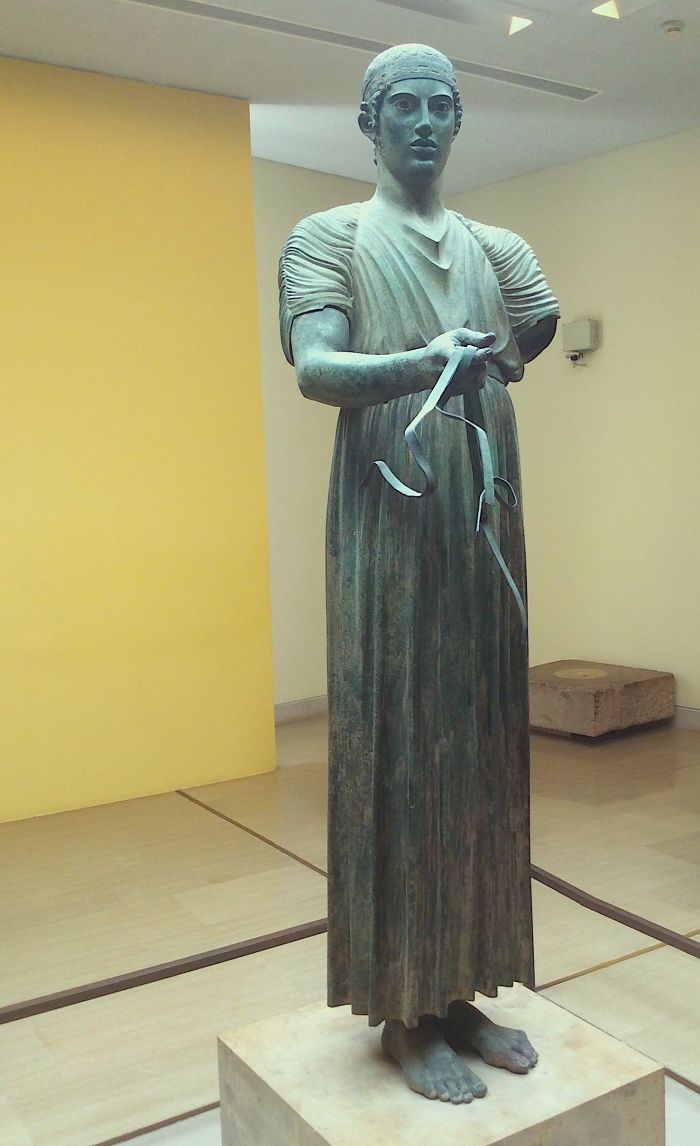
The Charioteer is one of the best-known statues surviving from Ancient Greece and is considered one of the finest examples of ancient bronze sculptures. It is in the Archaeological Museum at Delphi, on the grounds of the ruins.
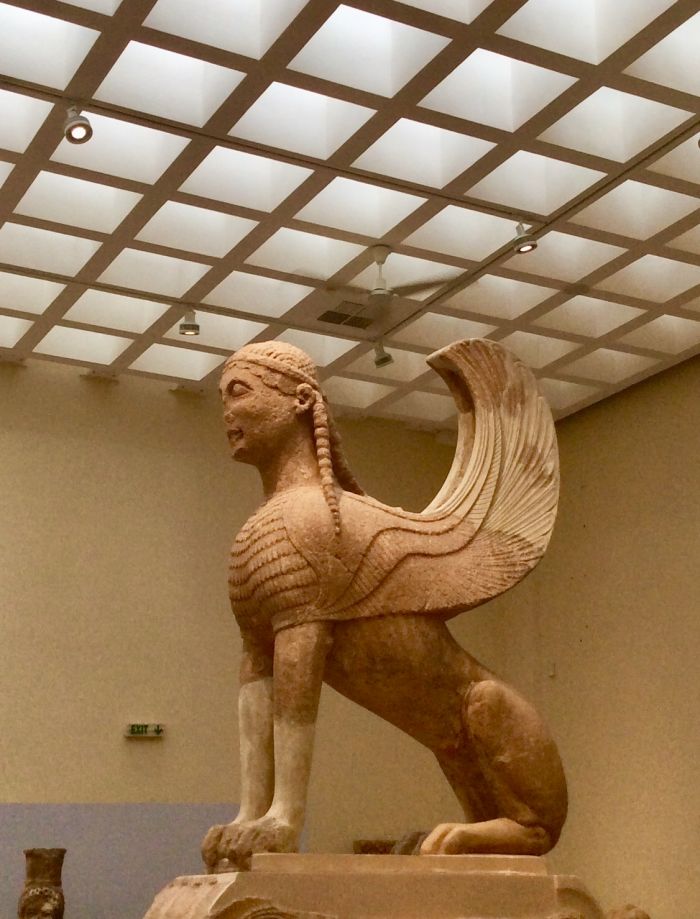

A portion of the northern Frieze of the Siphnian Treasury, part of the ruins at Delphi, of the Gods fighting the ancient giants.
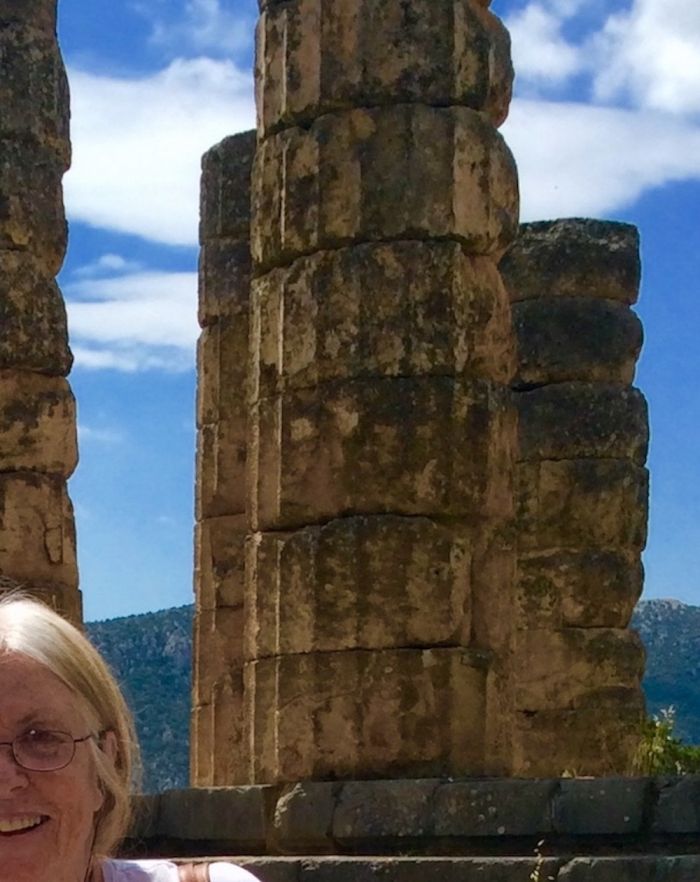
Touching the past, living in the present.









